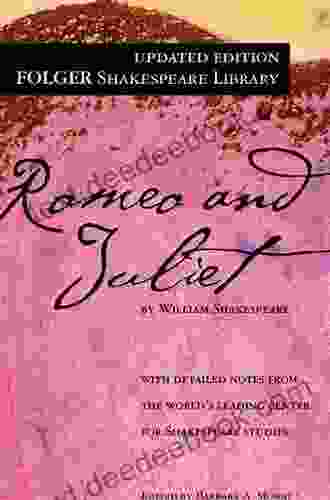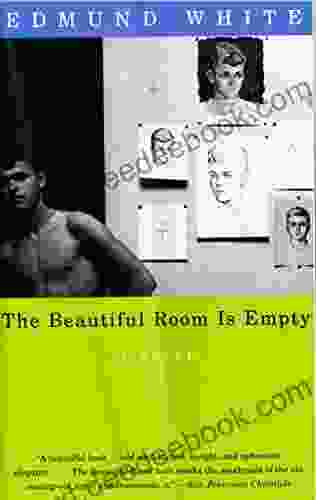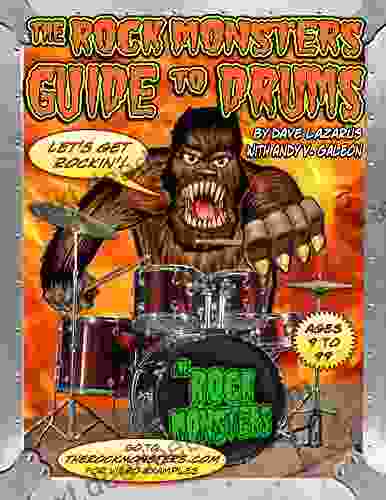The Enriching Realm of Theatrical Expression: Unveiling the Elements that Captivate Audiences

Theatrical expression, an enchanting fusion of diverse artistic elements, captivates audiences worldwide. From the grandest stages to the most intimate black boxes, the allure of live performance lies in its unique ability to evoke emotions, provoke thought, and transport us to worlds beyond our own. In this comprehensive article, we delve into the fundamental elements of theatrical expression, exploring their intricate interplay and the profound impact they have on the audience's experience.
1. The Actor: Embodiment of the Human Condition
At the heart of theatrical expression lies the actor, an artist who embodies the human condition through skillful interpretation of written text. Their vocal prowess, physicality, and emotional depth bring characters to life, making them relatable and compelling. Through the actor's voice, we hear the words of the playwright, while their gestures and movements illuminate the inner workings of their characters' minds.
5 out of 5
| Language | : | English |
| File size | : | 669 KB |
| Text-to-Speech | : | Enabled |
| Screen Reader | : | Supported |
| Enhanced typesetting | : | Enabled |
| Word Wise | : | Enabled |
| Print length | : | 214 pages |
a. Characterization: A Dance of Transformation
Characterization is the art of creating a fully realized character, with a distinct personality, backstory, and motivations. Actors achieve this through meticulous research, empathy, and a deep understanding of human psychology. They inhabit the character's skin, becoming conduits for their hopes, fears, and aspirations.
b. Movement: A Choreography of Emotion
Physicality is an integral aspect of theatrical expression. Actors use their bodies to convey emotions, thoughts, and relationships. From subtle gestures to expressive dance, movement serves as a powerful tool to communicate unspoken depths of the characters' psyches.
c. Vocal Expression: The Music of Language
The actor's voice is a symphony of sound and emotion. They use volume, pitch, intonation, and rhythm to create a tapestry of sonic textures that enhance characterization and convey meaning. Through vocal expression, actors bring the playwright's words to life, evoking laughter, tears, and profound contemplation.
2. The Playwright: Architect of Dramatic Worlds
Behind every captivating performance lies the playwright, the wordsmith who weaves the tapestry of the dramatic experience. Their pen gives life to characters and stories, constructing worlds that resonate with universal themes and human experiences.
a. Story Structure: The Blueprint of a Play
The playwright's craft lies in creating a compelling story structure that unfolds in a logical and engaging manner. They establish a conflict that drives the action, develop rising tension through obstacles, and provide a satisfying resolution that leaves the audience fulfilled.
b. Language and Dialogue: The Fabric of Communication
The playwright's mastery of language and dialogue breathes life into characters. Through their words, they create authentic and relatable interactions that reveal character relationships, advance the plot, and evoke emotions. The rhythm, tone, and imagery of their dialogue paint a vivid tapestry of the dramatic world.
c. Character Creation: Breathing Life into the Imagination
Playwrights are the architects of the characters that populate their plays. They meticulously craft unique individuals with motivations, desires, and flaws that resonate with the audience. Their ability to create memorable and complex characters is essential for the success of any theatrical work.
3. The Director: Master of Collaborative Vision
The director serves as the visionary guide, orchestrating the various elements of theatrical expression into a cohesive and impactful performance. They interpret the playwright's text, collaborate with actors and designers, and shape the overall aesthetic of the production.
a. Interpretation: Illuminating the Play's Essence
The director's interpretation of the play is paramount to its successful execution. They must delve into the text, uncover its hidden meanings, and communicate their vision to the cast and crew. Their interpretation shapes every aspect of the performance, from characterization to staging.
b. Collaboration: Uniting the Creative Ensemble
Directing is a collaborative process that requires exceptional leadership and communication skills. The director must bring together actors, designers, technicians, and musicians, fostering a cohesive ensemble that works seamlessly towards a shared artistic goal.
c. Staging: The Spatial Canvas of Drama
Staging refers to the spatial arrangement of actors, props, and scenery on the stage. The director uses staging as a tool to create dynamic and engaging performances, guiding the audience's attention and enhancing the emotional impact of the play.
4. The Designer: Visual Alchemist of Imagination
Designers play a pivotal role in transforming the playwright's words into a tangible theatrical experience. They create the visual and aural landscape of the production, immersing the audience in the world of the play.
a. Scenic Design: Architecture of Imagined Worlds
Scenic designers conceptualize and build the sets that bring the playwright's world to life. They meticulously research the play's historical and cultural context, collaborating with the director to create a visually stunning environment that supports the narrative and enhances the actors' performances.
b. Costume Design: Threads of Characterization
Costume designers create the garments that define each character's identity and status. Their work involves not only designing visually appealing costumes but also ensuring that they are historically accurate, comfortable for the actors to wear, and contribute to the overall aesthetic vision of the production.
c. Lighting Design: Illuminating the Path
Lighting designers use light to create atmosphere, convey mood, and highlight specific moments within the play. They manipulate intensity, color, and direction to enhance the audience's connection to the characters and story.
d. Sound Design: The Sonic Tapestry of Emotion
Sound designers create the aural environment of the production, using music, sound effects, and silence to evoke emotions and enhance the narrative. They collaborate with the composer to create an immersive sonic experience that transports the audience to the world of the play.
The elements of theatrical expression intertwine seamlessly to create captivating performances that leave a lasting impact on audiences. From the actor's embodied presence to the playwright's wordsmithing, the director's collaborative vision, and the designer's visual artistry, each component contributes to the transformative power of live theater. By delving into these elements, we gain a deeper appreciation for the complexity and artistry that makes theatrical expression a timeless and universally resonant form of human creativity.
5 out of 5
| Language | : | English |
| File size | : | 669 KB |
| Text-to-Speech | : | Enabled |
| Screen Reader | : | Supported |
| Enhanced typesetting | : | Enabled |
| Word Wise | : | Enabled |
| Print length | : | 214 pages |
Do you want to contribute by writing guest posts on this blog?
Please contact us and send us a resume of previous articles that you have written.
 Book
Book Novel
Novel Story
Story Genre
Genre Reader
Reader E-book
E-book Newspaper
Newspaper Paragraph
Paragraph Sentence
Sentence Shelf
Shelf Glossary
Glossary Bibliography
Bibliography Foreword
Foreword Preface
Preface Synopsis
Synopsis Annotation
Annotation Footnote
Footnote Manuscript
Manuscript Scroll
Scroll Codex
Codex Tome
Tome Library card
Library card Reference
Reference Narrator
Narrator Character
Character Librarian
Librarian Card Catalog
Card Catalog Borrowing
Borrowing Archives
Archives Study
Study Scholarly
Scholarly Lending
Lending Academic
Academic Journals
Journals Rare Books
Rare Books Special Collections
Special Collections Study Group
Study Group Thesis
Thesis Theory
Theory Textbooks
Textbooks Delphine Perret
Delphine Perret Munir Moon
Munir Moon Karina Halle
Karina Halle Nader Sabry
Nader Sabry Ernst Lothar
Ernst Lothar Sarah Winman
Sarah Winman Lex Martin
Lex Martin Peter Andreas
Peter Andreas Russ Girsberger
Russ Girsberger Tina Wells
Tina Wells Gordon Korman
Gordon Korman Helen Phifer
Helen Phifer Janice Maynard
Janice Maynard Cristin Morgan
Cristin Morgan Paulette Kennedy
Paulette Kennedy Matthew J Lacombe
Matthew J Lacombe Shoo Rayner
Shoo Rayner Michael Essany
Michael Essany Jared R Rawlings
Jared R Rawlings Bullet For My Valentine
Bullet For My Valentine
Light bulbAdvertise smarter! Our strategic ad space ensures maximum exposure. Reserve your spot today!

 Calvin FisherExploring the Timeless Love and Tragedy of Romeo and Juliet at the Folger...
Calvin FisherExploring the Timeless Love and Tragedy of Romeo and Juliet at the Folger...
 Harry CookThe Beautiful Room Is Empty: A Journey into Loneliness, Love, and Unfulfilled...
Harry CookThe Beautiful Room Is Empty: A Journey into Loneliness, Love, and Unfulfilled...
 F. Scott FitzgeraldThe Chronicle of Wanderings on the Japanese High Road: A journey through time...
F. Scott FitzgeraldThe Chronicle of Wanderings on the Japanese High Road: A journey through time... Ken FollettFollow ·16.4k
Ken FollettFollow ·16.4k Fletcher MitchellFollow ·6k
Fletcher MitchellFollow ·6k Neil GaimanFollow ·16.6k
Neil GaimanFollow ·16.6k Dakota PowellFollow ·12.4k
Dakota PowellFollow ·12.4k Greg FosterFollow ·8.7k
Greg FosterFollow ·8.7k Craig BlairFollow ·3.7k
Craig BlairFollow ·3.7k Todd TurnerFollow ·17.7k
Todd TurnerFollow ·17.7k Gavin MitchellFollow ·13k
Gavin MitchellFollow ·13k

 Jack Powell
Jack PowellThe United Nations Renaissance: A New Era of Global...
The United Nations was founded in 1945 in...

 Banana Yoshimoto
Banana YoshimotoMastering the Art of Critical Analysis: A Comprehensive...
Ida B. Wells-Barnett, a...

 Brian West
Brian WestWhat You Need To Know About The Inner Lives Of Men:...
Understanding the...
5 out of 5
| Language | : | English |
| File size | : | 669 KB |
| Text-to-Speech | : | Enabled |
| Screen Reader | : | Supported |
| Enhanced typesetting | : | Enabled |
| Word Wise | : | Enabled |
| Print length | : | 214 pages |












